|
Ancient Wisdom for Modern
Bodies
|
|
|
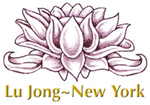
|
In This Issue:
|
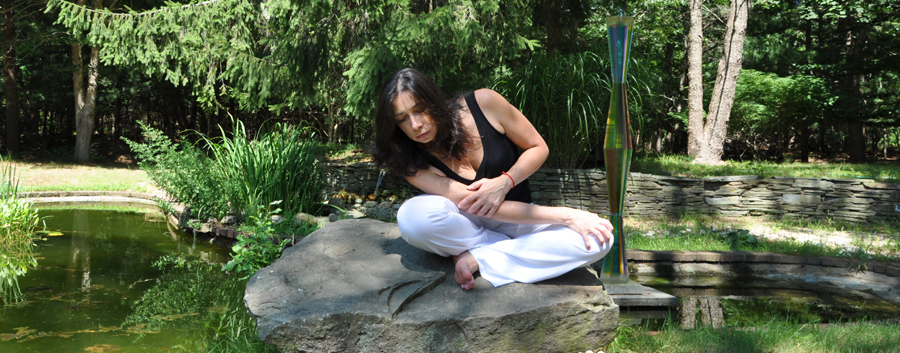
|
|
SO ... YOU SAY YOU TEACH LU JONG, EH?
“I'm not a teacher: only a fellow traveler of whom you asked the way." ~ George Bernard Shaw
|
|
I am sometimes asked "You teach Long John? Lo Jack? Oh! Lu Jong ... er, What's that?". Sigh.
To be a student and teacher of Lu Jong is incredibly satisfying and rewarding; to do so in the US has added
'challenging and pioneering' to the mix.
I was strongly drawn to this practice when Tulku Lobsang Rinpoche made his first visit to teach in the New York area.
My affinity for physical wellness, love of dance and fluid martial arts, and the introspection that goes hand-in-hand
with inner healing and energy practices, confirmed this would be a powerful new skill to master and implement as an antidote
to the frenzied pace of life most of us are forced to navigate.
|
|
The venerable Tulku Lobsang Rinpoche, through whom we receive this practice of Lu Jong, is a high Buddhist master, renowned teacher of
Tantrayana Buddhism and doctor of Tibetan Medicine. He bases his teachings on the ancient Tantric knowledge that has been the foundation for
Tibetan Buddhism, Medicine, Astrology and many other healing techniques for centuries. Born in Amdo, he was traditionally trained in the deepest
healing and spiritual practices in the monasteries of Tibet. Eventually, through contact with his Western students, he perceived the need to
create a practice accesible to all, yet powerful enough to address the healing and nurturing of our bodies and minds.
|
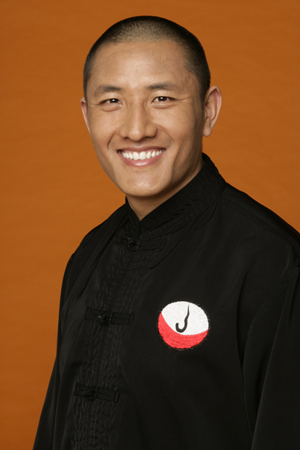 |
|
In Western cultures, seated meditation is not necessarily everyone's cup of tea. We also lack the time and discipline to
undergo years of studies and rigorous physical trainings. However we like 'To Do'. We like action, movement and results ...
and this style of healing yoga was designed for that purpose. Ultimately, Lu Jong brings health and happiness to our Bodies and Minds.
“The energy of the mind is the essence of life.” ~ Aristotle
|
|
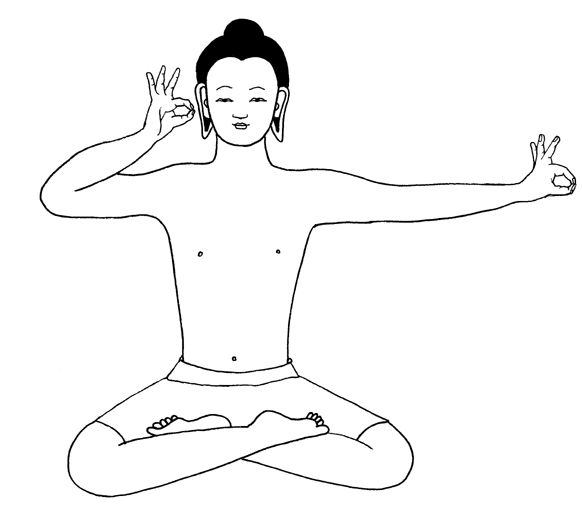
Drugu Kyang Wa
|
Body and Mind are interconnected. We know this to be true, for example, when we become angry (mind):
Our bodies react by tensing and clenching, blood rushes within. We feel a surge of heat as rage courses through us and beats in our eardrums
(body). Conversely, when we experience a slow, deep massage (body) the blissful sensations of physical release and relaxation shoot hormones
and 'happy thoughts' to our brains resulting in the sensation of melting into satsified puddles of deep pleasure (mind).
|
|
To understand how Lu Jong works we should try to learn how Buddhism, Tantrayana and Tibetan medicine regard the three levels of our bodies:
physical, mental, and energetic ... and the manner in which they relate to our mind. Lu Jong is a higher technique for opening our
chakras and by extension both the coarse and subtle levels of our physical bodies. The coarse body is what belongs to the five senses.
That is what we can see and feel and is what most people mean when they refer to their 'body'.
|
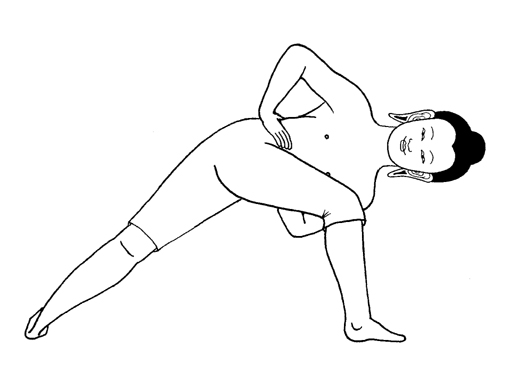
Drongmo Sur Dung
|
|
The subtle body is the tens of thousands, 72,000 to be exact, of channels within our bodies.
Channels transport everything from our body fluids (physical level), to emotions (mental level), and to energy/prana/chi
(energetic level) throughout us. The places where channels intersect are called chakras.
"A genuine smile distributes the cosmic current, Prana to every body cell.
The happy man is less subject to disease,
for happiness actually attracts into the body
a greater supply of the Universal life energy." ~ Paramhansa Yogananda
Channels are most effective when they are open, flexible and unbroken. When we combine unique movements with specific breathing patterns and
target gentle pressure on key points on the body, our channels are exercised and 'blocks' (whatever is preventing the flow of energies) are
broken down and removed, thus restoring a healthy 'flow' to our systems. Pressures are released from other areas and balance is restored to the
network. A simple analogy would be removing a clog from a drain pipe.
When our coarse and subtle bodies are operating smoothly we can work towards living a long and healthy life.
To combine this with a spiritual practice makes it possible to reach a higher state of mind.
The repetitions combined with continuous movements help us tune in to our bodies. We learn and strive to listen and feel the
places where we may have limitations. The practice encourages us to visualize how we are healing and improving ourselves from the inside out.
There isn't any room for other concerns (Did I pay that bill? What should I make for dinner?) and thoughts and distractions
are gently set aside for a more appropriate time.
THIS is meditation - but Meditation in Motion; and for those of us who love to multi-task, is such a gloriously simple way to
accomplish benefits on all the levels of our body: Physical, Mental & Energetic.
|
|
From a Physical healing perspective, Lu Jong is intimately tied to nurturing and strengthening our spines.
The spine connects with all the parts of our bodies, therefore to have a healthy spine, supple and flexible, is to pass this
health on to our organs. Good posture and a good flow of energy - win-win!
On a more subtle level, Tibetan philosophy divides the phenomenal and psycho-cosmic worlds into the five basic energies.
Spiritually these energies correspond to the Five Buddha Families and the Five Wisdoms. Mentally, they are associated with the Five Emotional
qualities; and in the Physical world they manifest as the Five Elements.
|
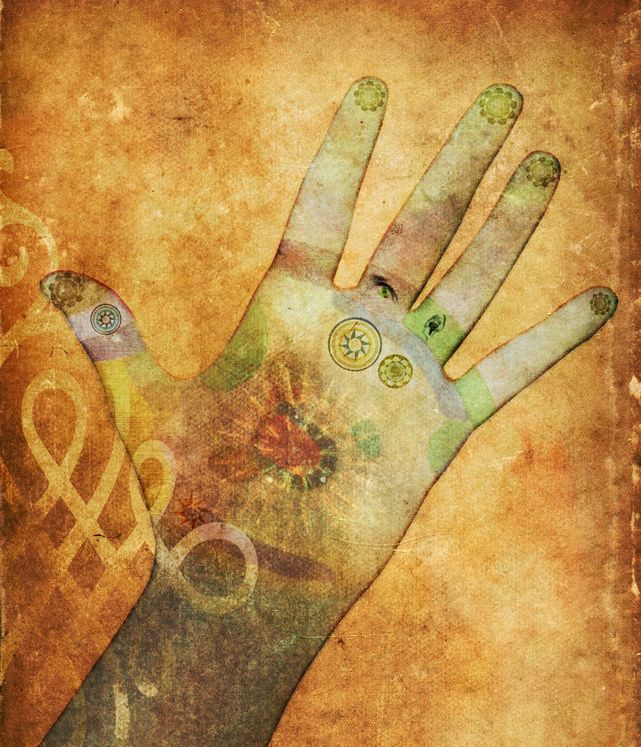 |
|
All phenomena are comprised, in varying combinations, of these
essential five elements: Space, Wind, Fire, Water & Earth. This is our link to the natural world and to each other.
Lastly, we have three essential substances in our bodies that are responsible for the basic functions of our body's systems.
These are called Humors: Wind, Bile &egm. Each humor also manifests on the physical, mental and energetic levels of our bodies.
So, from the viewpoint of Buddhism, Tantrayana and Tibetan Medicine, the health of our body and mind is completely dependant
upon how we relate to these elements, their balance within us, and the degree to which we work to restore their harmony whenever possible.
Whew! Yes, there is a lot going on.
With Lu Jong we use our bodies to 'transform' ourselves and to bring all of these qualities and energies into harmony within us.
The practice serves to extend that balance outward to synchronize with the rhythms of the natural world around us; and ultimately to attain
maximum efficiency and happines in our lives. Most of the Lu Jong movements taught in this lineage come specifically from Dzogchen Bon and the great
yogi Naropa. They all connect with Tantrayana teachings.
"You are full of potential and everything you need is inside of you.
Realizing this is the greatest blessing you will ever receive" ~ Tulku Lobsang
Tulku Lobsang Rinpoche began his studies as a young boy of six at Sowa Monastery, his local Buddhist monastic school,
and by age eleven continued on to study at the Nangzi Bon Monastery. Having been recognized by the oracle at Sowa Monastery as the true
reincarnation of their Lama, Tulku Nyentse - by the age of thirteen, Tulku Lobsang was enthroned in a celebratory ceremony as the
eighth incarnation of Tulku Nyentse.
Over the years he received extensive formal studies at Amchok Monastery. Sutra, Medicine, Astrology ... in all of
the Buddhist lineages. He deepened his practices by receiving transmissions from the masters of the many different lineages and
Lu Jong traditions. Today, he continues as a practitioner of all traditions.
"I dedicate the merit of the occasion to all beings. This gesture of universal friendship has been likened
to a drop of fresh spring water. If we put it on a rock in the sunshine, it will soon evaporate. If we put it in the ocean,
however, it will never be lost. Thus the wish is made that we not keep the teachings to ourselves but to use them to benefit others.” ~ Pema Chödrön
The art of healing and medical science are Tulku Lobsang's special areas of expertise, with his strongest
interest being in Tsa Lung and Tummo.
Tulku Lobsang has made Lu Jong accesible by selecting the most effective movements and organizing them into concise sequences for
students of all abilities and philosophies.
Years of studies with great masters may not be possible for most of us, but through Tulku Lobsang's diligence we can reap the
benefits of this ancient healing yoga, and as such, it is with the utmost respect that I share my Lu Jong knowledge and remain true to
Rinpoche's desire that it be of benefit to all sentient beings.
“In learning you will teach, and in teaching you will learn.”
|

|
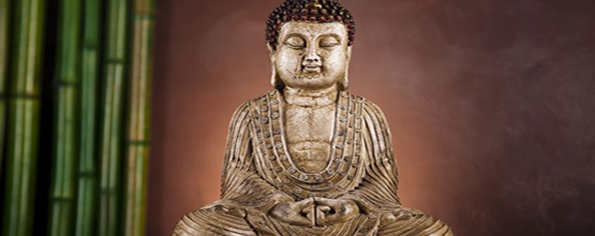
ON GRATITUDE, GENEROSITY & GRACE
"Between the giver, the recipient, and the gift there is no separation" ~ Zen Teaching
|
|
A new year has slipped into our lives. With it comes the opportunity to wipe the slate clean, to renew our focus,
and cultivate hopes for growth in some aspect of our lives. I have never felt compelled to join the trend of making 'radical promises'
for a 'new and improved' me. Personally, that is way too much pressure added on top of my mountain of responsibilities.
That said, in this world each person walks his own path and all methods seem to work out fine - most of the time.
|
|
At the start of this year, I thought about how frequently the simple gestures of Giving and Receiving are overlooked and taken for granted.
Yet, if you stop to think about it, ALL that we are has been given to us. We are not self-made; our life is one big gift.
All that remains is for us to allow our innate gratitude to arise and to share ourselves as best we can.
|
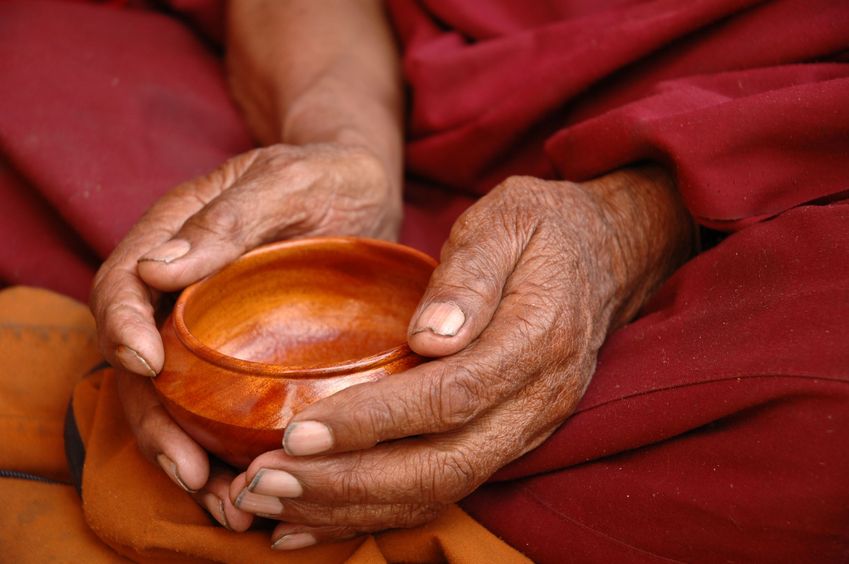 |
|
"The happy heart gives away the best.
To know how to receive is also a most important gift, which cultivates generosity in
others
and keeps strong the cycle of life" ~ Venerable Dhyani Ywahoo
Imagine a world without generosity? I cannot!
To 'give' seems simple enough, but it is actually a practice that requires patience, confidence, and perhaps even a touch of
fearlessness. Big obstacles stand before us, we doubt our abilities, question our resources, and hardest of all we are
asked to break out of our self-absorption.
To not think of ourselves is possible ... but what about not expecting 'credit and kudos' for our actions?
|
|
To 'receive' can be equally daunting. We must wrestle with the greedy expectations of what we 'should' get and 'when' we should get it.
Instead we must learn to accept what is given whenever it is offered, with the greatest challenge being to set aside judgment and to accept
with whole-hearted grace.
|
|
With each of these actions we are forced to look beyond ourselves and in exchange we discover the power to cut through our fears.
All of us have something to give, whether it be of ourselves or material gifts. In dong so we find that we
ourselves are blessed because, by stepping into a larger frame of mind where we can see how we are all inter-connected, we discover that the
more we give, the more we receive.
As Tulku Lobsang says, "What we give, is what we receive".
|
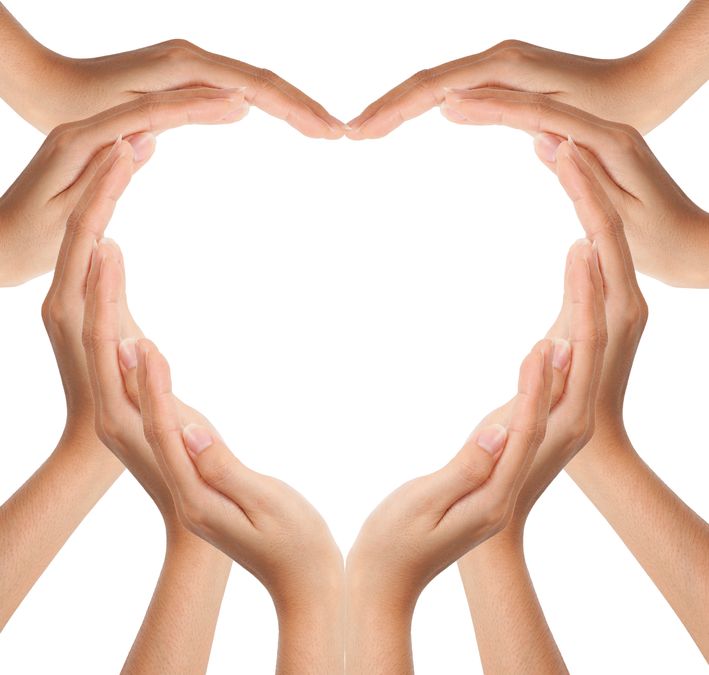 |
|
Maybe it would be nice to try putting this into action this year. Here are some ideas:
- Pick a day for the practice of generosity. Try to notice how many opportunities you can find to 'give' in one day. Cook a meal,
make a donation, spend some time with someone who needs it. Notice your motivation, pay attention to how each 'gift' feels to you, and the
reactions of the recipients.
Finally, at the end of the day, take stock of how you feel and enjoy the 'gift' you have shared with yourself.
- Spend a few minutes at the end of the day, or week, to write a list of the things you are grateful for. In addition to the usual list of shelter,
health and family, try to include some of the more subtle pleasures such a sunrise, a piece of music, a loved one's smile,
or even a pet's devotion.
- Take a moment to be grateful before each meal, and to remember that many people and elements have come together to make your meal a reality.
"Gratitude unlocks the fullness of life. It turns what we have into enough and more ...
it can turn a meal into a feast,
a house into a home, a stranger into a friend." ~ Melody Beattie
Each time we permit ourselves to feel that delightful experience of gratitude, we should also take notice of the sensations in our bodies and
let it register deeply in our hearts and awareness. Gratitude requires an acceptance of the perfection and fullness of each moment.
We are no longer looking for more because we are fully open to what already is. We loosen our resistance to the flow of life, and in
doing so experience the graceful joy of an open heart that allows compassion to flow outward and understanding to flow inward.
"Out of the Indian approach to life there comes a great freedom - an intense and absorbing love for nature;
a respect for life; enriching faith in a Supreme Power; and principles of truth, honesty, generosity, equity, and
brotherhood as a guide to mundane relations." ~ Luther Standing Bear, Oglala
|

|
John O'Donohue: "Beannacht"
... May the nourishment of the earth be yours,
May the clarity of light be yours,
May the fluency of the ocean be yours,
May the protection of the ancestors be yours.
And so may a slow
Wind work these words
Of love around you,
An invisible cloak
To mind your life.
[Curator's note: "Beannacht" is the Gaelic word for "blessing."]
"Beannacht" by John O'Donohue, from To Bless the Space Between Us: A Book of Blessings.
© Doubleday, 2008. The poem is listed in the book as a blessing for the New Year.
|

|
MOMOS ~ A RECIPE FOR AUTHENTIC TIBETAN DUMPLINGS
|
Unique and delicious, Tibetan dumplings are basically the unofficial dish of Tibet and most families will have a slightly different recipe along with theories on how to prepare them.
Variations are endless, they can be meat, vegetarian, steamed (most popular), fried, and cooked in soups.
|
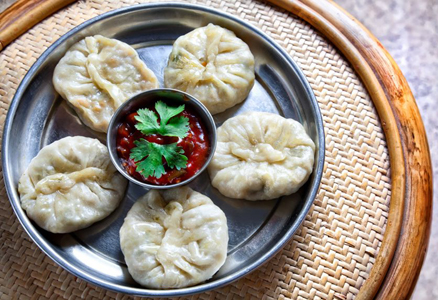 |
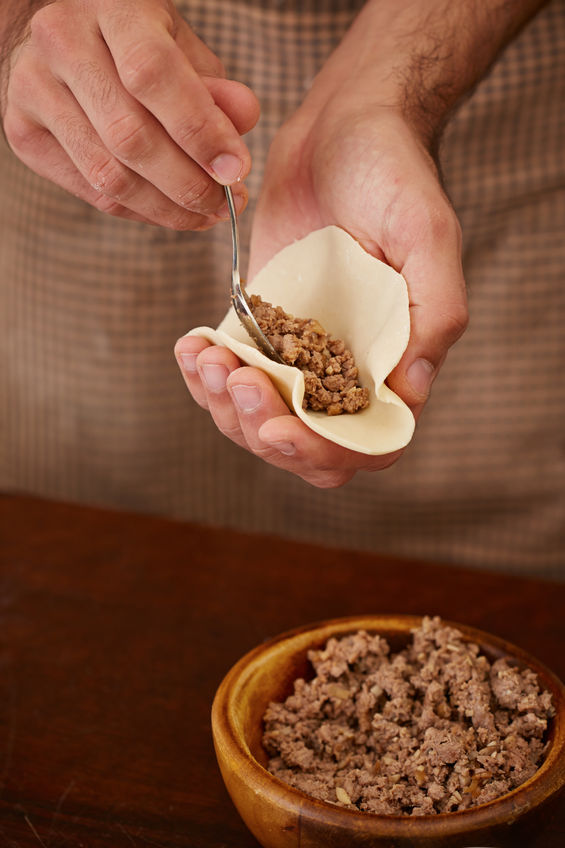
|
THE DOUGH
The first step is to make the dough.
If making momos for four people, use about 2 cups of wheat flour (white, all-purpose is fine) and somewhere between 3/4 cups and 1 cup of water.
Mix the flour and water very well by hand, and slowly keep adding water until you have a smooth ball of dough.
Knead your dough until it becomes very flexible, then set aside while you prepare the other ingredients. Do not let the dough dry out.
|
THE FILLING
Vegetable Filling
Chop all the following ingredients into very, very small pieces:
- 2 onions
- 2 inches of fresh ginger
- 2 or 3 cloves of garlic
- A bunch of cilantro
- 1 pound of cabbage
- 1 pound of tofu **
- 1 quarter pound of dark brown mushrooms **
- 2 tablespoons of soy sauce
- 1 teaspoon of chicken, beef or vegetable bouillon
|
Meat Filling
1 pound of ground beef (or yak): This beef replaces the tofu and mushrooms in the vegetarian recipe.
For both types of momos, put all the ingredients in a pot or big bowl add the bouillon and soy sauce and mix very well. Hands will work well if working with ground meat.
** Don't use these if you are making meat momos.
|
SHAPING THE MOMOS
Place your dough on a board and use a rolling pin to roll it out very thinly, but not so thin that you can see through it!
Cut it into little circles for the momos. An easy method is to use a small cup or glass, upside down, to cut out circles about the size of the palm of your hand. Cookie and biscuit cutters will work nicely too.
For the overachievers, you can choose to pinch off small amounts of dough and to stretch them into shape with a rolling pin.
Now they are ready to be filled and shaped.
There are many shapes possible, but the two most common ones are the basic round and the half-moon shapes. The half-moon is the easier to make.
|
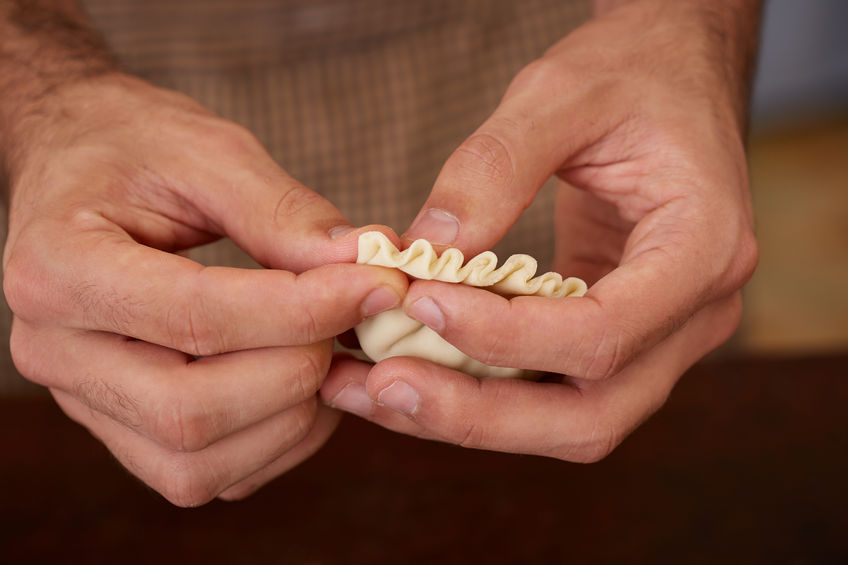
|
For either shape place a circle of dough in your hand
and add a tablespoon of filling to the center.
|
Round Momos
With your available hand, pinch the edge of the dough together. You don't need to pinch much dough in the first pinch - just enough to make a small fold between your thumb and forefinger.
Continue pinching around the circle little by little, keeping your thumb in place,and continuing along the edge of the circle with your forefinger, grabbing the next little piece of dough, and folding and pinching it down into the original fold/pinch being held by your thumb.
Basically, you are pinching the whole edge of the circle into one spot.
Continue folding and pinching around the edge until you reach the spot where you began and then close the hole with a final pinch.
Be sure to close the hole on the top of the momo. That way you don't lose the juices.
|
Half-Moon Momos
This style is quite pretty. You begin in the same manner by placing a tablespoon of filling into the center of your dough circle.
Then you fold your circle of dough in half, covering over the filling.
Now press together the two edges of the half circle so there are no open edges and the filling is completely enclosed in the dough.
Your momo shape can be made pretty by pinching and folding along the curved edge of the half circle. There are even some kitchen tools that can do all of this with a quick squeeze.
As you are making the momos, you will need to have a non-stick surface and a damp cloth to keep your prepared shapes from drying out as you finish the others.
|
STEAMING THE MOMOS
Boil water in a large steamer. The double and triple layer ones are great for preparing large batches.
Lightly oil the steamer surface before putting the momos in or else they will stick to the pot.
Add the momos after the water is already boiling, fitting as many as you can without letting them touch each other.
Steam for about 10 minutes, then serve them hot, with soy sauce or hot sauce for dipping.
“The only real stumbling block is fear of failure.
In cooking you've got to have a what-the-hell attitude.” ~ Julia Child
|
|
SEPEN - A RECIPE FOR TIBETAN HOT SAUCE
|
You will need to use a blender or food processor for this recipe.
INGREDIENTS
- 1 medium onion
- 2 medium tomatoes (Roma work well)
- 2 tablespoons of cilantro
- 2 stalks of green onion
- 2 stalks of celery
- 3 cloves of garlic
- About a teaspoon of salt, use your taste here
- 1 cup dried red peppers
- 1 tablespoon of oil for cooking
* You can adjust the spiciness of the recipe by using less red peppers and/or more of the other ingredients
|
PREPARATION
Roughly chop the celery, tomatoes, green onion, and cilantro. Peel and roughly chop the garlic.
Peel and cut the onion in half lengthwise, then slice fairly thin. Slice the tomato into thin slices.
Heat the oil in a pan on high.
When the oil is hot, first cook the garlic a few seconds, then add the onion slices and stir fry for about 1 minute.
Add the celery and whole red peppers and stir fry for another minute. Now add the tomato slices and cook for another minute.
Stir in the cilantro, spring onion, and salt.
Cover and cook for 3 minutes. At this point everything should be cooked down a bit.
|
Put everything into a blender or food processor and pulse until you have a sauce.
Stop at the thickness you prefer.
|
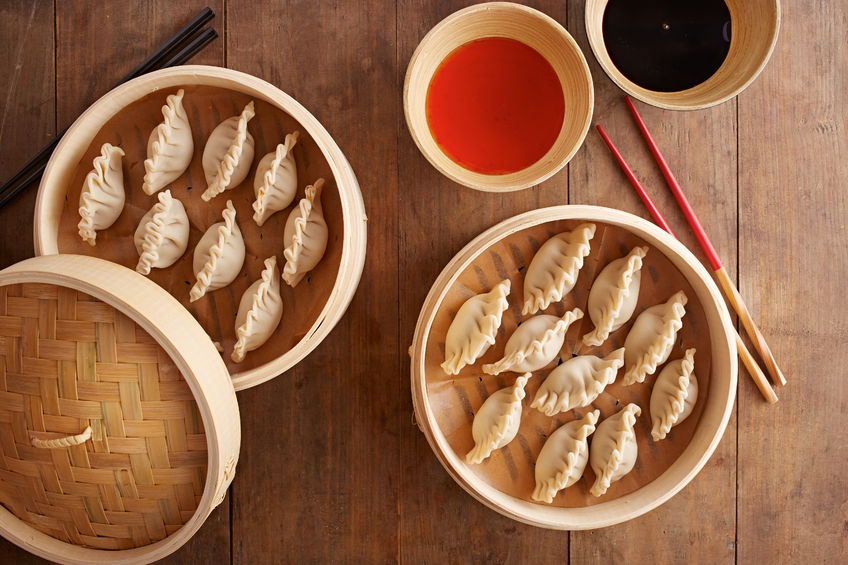 |

|
HOW THE SACRED DUCK GOT HIS
YELLOW BREAST
A Tibetan Folk Tale
|
|
"When life ends you may arise and have peace with Drolma, but neverheless it's a great calamity when
the rock rolls down the mountain and takes your life." ~ Tibetan proverb
|
ONCE upon a time, on the top of a mountain which was quite flat and covered with grass and flowers, a frog and a rabbit were playing around, having a good time. In the midst of their fun, they found a beautiful golden pot. The frog exclaimed, "See what I have found. It's all mine! What a lot of money I shall have."
The rabbit said angrily, "It's mine, I saw it first."
|
 |
|
And soon they were fighting fiercely. But all at once the the rabbit stopped and remarked, "This won't do, let's go to the foot of the mountain and race back to the top, and the one that gets here first and gets in the pot shall have it, tomorrow to be the day of the race."
The rabbit was sure of success because he knew he could run and was certain the frog couldn't. The frog knew well enough he couldn't possibly win in that kind of race, so he thought of a scheme. He found two of his friends exactly like himself in every way. One, he took to the top of the mountain and put in the pot, the other he placed halfway down the mountain, and located himself at the base. When the rabbit came the next morning and they were ready to start on the race, the frog gave a few hops while the rabbit raced on ahead.
Much to his astonishment, when he got halfway up the mountain, there was the frog hopping wildly along in front of him. He said to himself, "I must do better than this," and away he flew like the wind. But on reaching
the summit there sat the frog in the pot. The rabbit had lost the race and also the gold.
Now, the frog didn't know how to get that big pot down the mountain, and while he was puzzling over it, a big duck, very dark in color, with mouse-colored breast, flew over him, stopped a minute, and asked his trouble. The frog told him what was the matter and asked if he could carry the pot down the mountain.
The duck said he could and would do so if he might have half. As there was nothing else to be done, the frog agreed and the duck carried it down for him, so there it was divided and the duck thought it was so beautiful that he took his half and smeared it on his breast, and that's where the sacred duck got his beautiful golden breast.
Note: On the tops of the mountains in Tibet and near the lakes are found these beautiful ducks. They are very tame and have no fear of people, as they are held to be sacred by the Tibetans, who believe them to be a reincarnation of some holy man because of the beautiful yellow color, which is their sacred color.
|

|
METTA SUTTA
~ The Teaching on Loving Kindness
|
|
This is what should be done
By one who is skilled in goodness,
And who knows the path of peace.
Let them be able and upright,
Straightforward and gentle in speech.
Humble and not conceited,
Contented and easily satisfied.
Unburdened with duties and frugal in their ways.
Peaceful and calm, and wise and skillful,
Not proud and demanding in nature.
Let them not do the slightest thing
That the wise would later reprove.
Wishing: In gladness and in safety,
May all beings be at ease.
Whatever living beings there may be,
Whether they are weak or strong, omitting none,
The great or the mighty, medium, short or small,
The seen and the unseen,
Those living near and far away,
Those born and to-be-born,
May all beings be at ease!
Let none deceive another,
Or despise any being in any state.
Let none through anger or ill-will
Wish harm upon another.
Even as a mother protects with her life
Her child, her only child,
So with a boundless heart
Should one cherish all living beings:
|
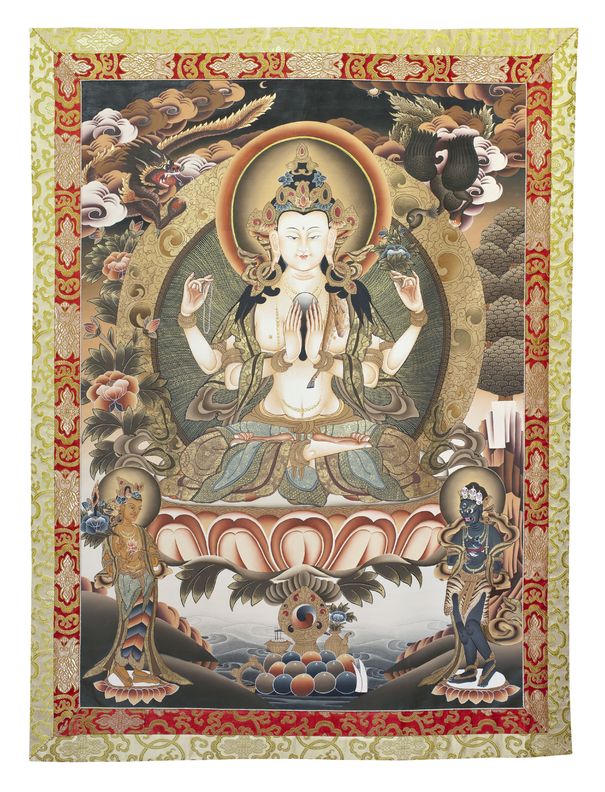
Radiating kindness over the entire world
Spreading upwards to the skies,
And downwards to the depths;
Outwards and unbounded,
Freed from hatred and ill-will.
Whether standing or walking, seated or lying down
Free from drowsiness,
One should sustain this recollection.
This is said to be the sublime abiding.
By not holding to fixed views,
The pure-hearted one, having clarity of vision,
being freed from all sense desires,
Is not born again into this world.
|
|
“There is no small act of kindness. Every compassionate act makes large the world.”
~ Mary Anne Radmacher
|
|
|
|

|
SOME OF THE BENEFITS OF PRACTICING YOGA
“Eat healthily, sleep well, breathe deeply, move harmoniously.” ~ Jean-Pierre Barral
|
PHYSICAL HEALTH
POSTURE ~
The very nature of yoga is to hold your body in more healthful positions. You are called upon to make subtle adjustments to improve your alignment. With consistent practice, your posture improves ... along with confidence and health.
|
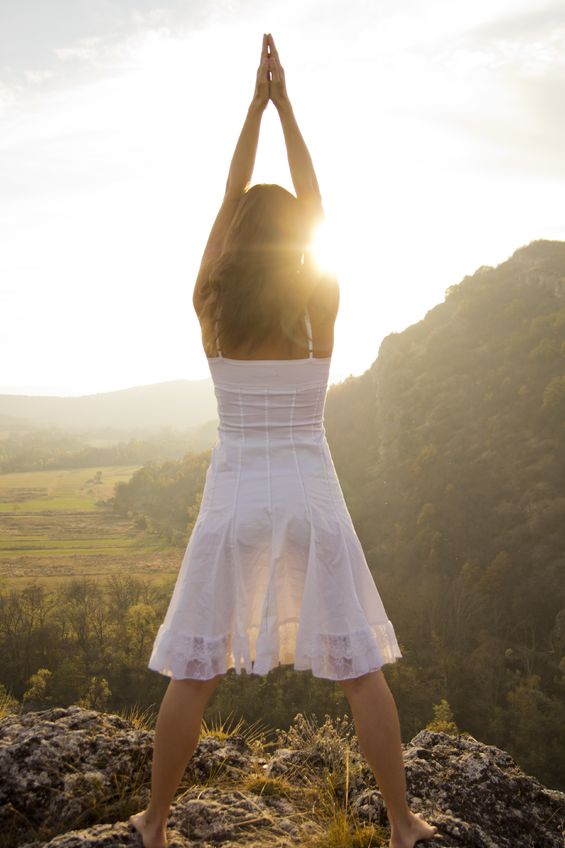 |
STRENGTH ~
The premise of yoga is that you are using the weight of your body for overall strength. A strong core helps to heal and reduce injuries. Many athletes cross train with yoga.
ENERGY ~
A regular practice supplies you with consistent energy, and many sessions can leave you feeling energized rather than tired. Sexuality is increased. Yoga also stimulates the detoxification process within the body. Detoxification has been shown to delay aging among other benefits. Enough said.
BALANCE ~ By practicing balance and control over your body, you will discover that the benefits extend beyond the classroom. You will have an awareness of your body and how its parts work together, resulting in more graceful and efficient movements.
|
PAIN ~
Pain tolerance is much higher among those you practice yoga regularly. Some instances of chronic pain can be lessened or even eliminated. Immune systems are strengthened. Need more?
|
MENTAL HEALTH
CONCENTRATION ~ When practicing yoga you discourage distractions by focusing on your breath. Concentration is simply taking your attention to a single point of focus, a useful skill to develop.
|
CALMNESS ~ Concentration on what your body is doing has the effect of bringing calmness. You feel grounded and connected to the earth. Meditation techniques further your ability to calm your mind.
|
SELF-ACCEPTANCE ~ You learn that perfection is not the goal, everybody works to their own limits and abilities. Success can only be found on your own mat.
|
PATIENCE ~ Yoga teaches us to let go of outcomes and to surrender to the present moment. Nothing beats impatience like holding postures and focusing on your breath.
|
CONFIDENCE ~
Few activities encourage more self-confidence than yoga. You learn practical ways of creating internal and external improvements resulting in a stronger mind-body connection. You develop a more stable and positive approach to life.
|
|
|
|

|
|
A HOMEOPATHIC FIRST AID KIT
Homeopathy embraces the idea that all of us have a vital force, a power within us that guides growth and healing. A strong vital force keeps us healthy, while a weak one allows diseases and disorders of all kinds to develop. Homeopathic medicine simply strengthens this vital force so healing can occur, working with the body and mind to support our intrinsic desire for balance and health.
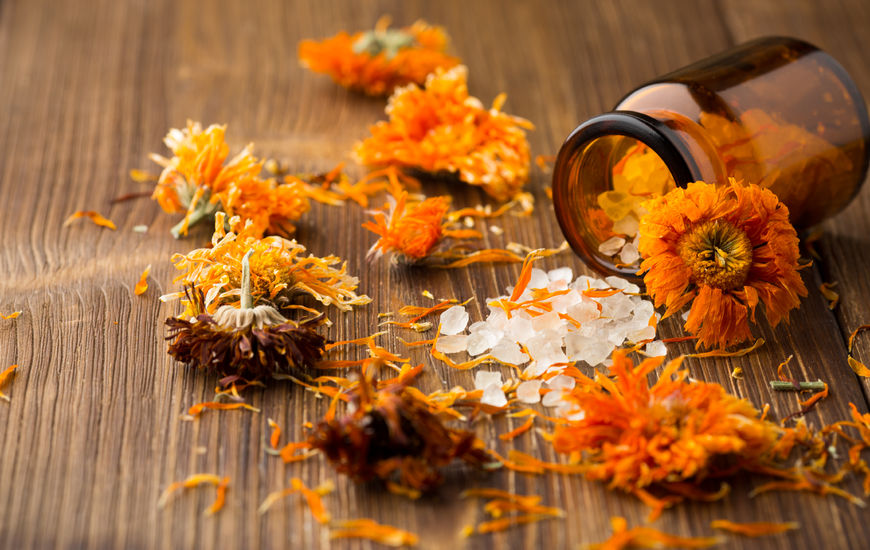
Homeopathic medicines, called remedies, derive from every possible natural substance - minerals, metals, animals, and of course, plants. Each source is placed in a solution (usually purified water) and repeatedly diluted and shaken in a process called "potentization." For example, a remedy might be processed 30 times, being diluted stepwise 1 part in 100 parts of solution until only the tiniest amount of the original substance remains. Such a remedy has what is called a 30c potency. Even such a minute measure is capable of activating the healing force within us.
Homeopathic medicines are available in a range of formats: Pellets, creams, gels, tinctures ... and potencies; but they are not effective in treating all diseases. Some conditions may require surgical intervention, antibiotics, an immediate relief of symptoms, or even nutritional and lifestyle changes. That isn't to say that homeopathy is of NO value in these instances, but that they are not for immediate results because of the need for individualization for the most effective treatment.
"It is more important to know what sort of person has a disease than to know
what sort of disease a person has." ~ Hippocrates
Homeopaths prescribe a remedy based on individual parameters, meaning the decision is based upon a patient's experience of the disease (what makes symptoms better or worse; time of day they appear; what mood is apparent, etc). The homeopath will look for ways the imbalanced state affects the patient, and that leads them to a remedy that supports the healing process. Most prescribed remedies will be a combination of several elements.
A remedy that suits the whole person will affect the whole person - body, energy, and mind.
The frequency with which a patient takes a homeopathic remedy varies with the intensity of the symptoms and the patient's response to the treatment. If you feel much better after a dose, you stop taking the remedy until the first sign that your symptoms have returned. In contrast to the typical stay-the-course treatments of a more pharmaceutical nature, the desire is to find the minimal effective dose so as to not impede with our inner healing power.
That said, in addition to consulting a professional for a proper diagnosis and treatment, one can have a general
Homeopathic First Aid Kit at home stocked with some basic remedies. This is an example of what MY kit contains which has worked over the years for day-to-day healing.
- Allium cepa: A common remedy for the runny nose and watery, itchy eyes typical of colds and allergies - especially hay fever. Typically the person's symptoms are worse in a warm room and are relieved in a cool room or open air.
- Apis mellifica: For bee stings, bug bites, and hives that produce painfully itchy eruptions and that feel better with cold applications.
- Arnica montana: This is the #1 remedy in sports medicine and first aid. Arnica eases all kinds of trauma: A fall on ice, a knee bump, a first game of tennis. Early use limits bruising, decreases pain, and facilitates rapid healing.
- Cantharis vesicatoria: The most common treatment for bladder infections. Also considered the best treatment for burns (kitchen or sunburn) that produce blisters.
- Hypericum perforatum: This is the first remedy to consider to help heal injuries to nerve-rich areas, like the tips of fingers and toes, the spine, and the tailbone. Often used with Arnica.
- Ignatia: One of the leading homeopathic medicines for acute grief, anxiety, and depression - especially after a death or separation from a loved one.
- Ledum palustre: The go-to treatment for all kinds of puncture wounds, including animal and bug bites, where the wound is relieved by cold applications. Try with Arnica for black eyes.
- Nux vomica: Good remedy for overdoing of all kinds: eating, working, hangovers, and for under-sleeping.
- Rhus toxicodendron: The premier remedy for sprains and strains - ask any dancer! Particularly good for "rusty gate" syndrome, joint pain that responds to warmth and gentle movement, and worsens with cold and immobility - think arthritis or even the flu. Also works as a treatment for chicken pox and poison ivy.
- Ruta graveolens: Use with Arnica for sprains that worsen with motion, or when the injury has occurred where a tendon or a ligament attaches to the bone.

IF YOU ARE THINKING ABOUT HOMEOPATHY ...
Do not consider this as a replacement for proven conventional care or postpone seeing a doctor about a medical problem.
Bring whatever homeopathic remedy you take with you when you visit your doctor to help determine the possibility of negative drug interactions.
Women who are pregnant or nursing, or people who are thinking of treating a child, should first consult a medical professional or trained homeopath before administering remedies.
"The greatest medicine of all is to teach people how not to need it."
|
|
|